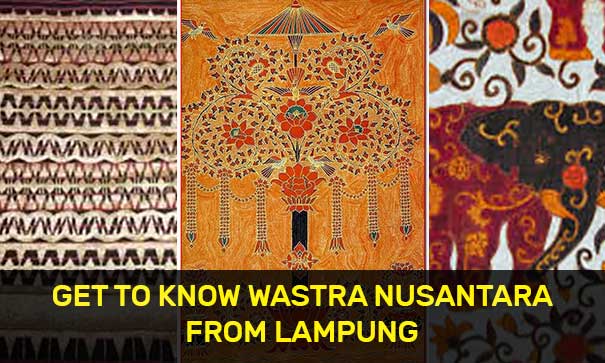This time we will explore the city in the southernmost island of Sumatra, namely Lampung. The city, which was known as a transmigration destination in the 1970-1990s era, has a very rich cultural diversity. Lampung is also on the other hand famous for its beautiful beaches, a world-wide coffee bean producer, as well as the area with the largest elephant breeding in Indonesia which is located in the Way Kambas area (East Lampung). We try to examine some of the batik and tenun wastra which are the original handicrafts of the people of Lampung.
First, the most famous cloth is the Tapis cloth. The history of the Tapis cloth is very long, in short it has been found since the ancient Hindu era around the 12th century or the 13th century. Other sources say that the Tapis cloth has existed since pre-historic times. The thick Hindu religious culture influences the ornament contained in the Tapis cloth, namely the flora and fauna ornament which is known to have an association with Hinduism such as elephants and cows. After the 15th century, after the entry of Buddhism and Islam, the Tapis cloth received a modification of the motifs of each of these religions. In Indonesia and Lampung in particular, Tapis was developed in the 1970s by a native Lampung craftsman and humanist named Andrean Sangaji. The use of this cloth in modern times is not only used for religious and traditional events, but also for the benefit of modern fashion.
The second famous motif is the Hayat Tree motif. The Hayat tree for the people of Lampung is a manifestation of universal or general beliefs that exist in every religion in Indonesia, including Islam, Christianity, Catholicism, Hinduism, Buddhism, and Confucianism. The Hayat tree itself has a philosophical value of unity and divinity which is the Creator of the universe.
The third motif is the Elephant motif, which is a mythological animal of Hinduism and is sacred in its native India. The elephant is symbolized by the god Ganesha, which symbolizes intellect and science. Besides that, he is also known as a protector and repellent of reinforcements or repulsions of reinforcements.


